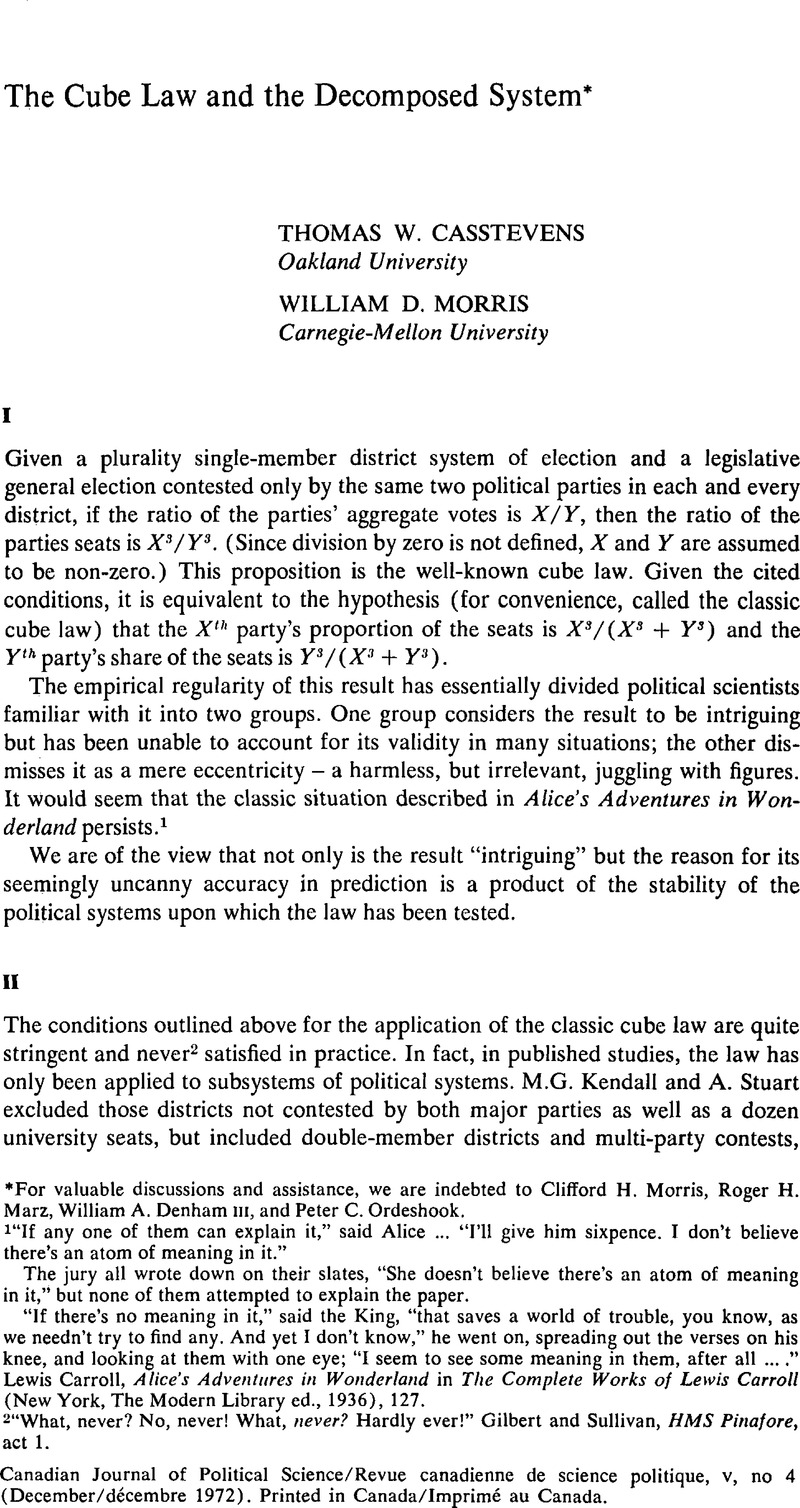Published online by Cambridge University Press: 10 November 2009

1 “If any one of them can explain it,” said Alice… “I'll give him sixpence. I don't believe there's an atom of meaning in it.”
The jury all wrote down on their slates, “She doesn't believe there's an atom of meaning in it,” but none of them attempted to explain the paper.
“If there's no meaning in it,” said the King, “that saves a world of trouble, you know, as we needn't try to find any. And yet I don't know,” he went on, spreading out the verses on his knee, and looking at them with one eye; “I seem to see some meaning in them, after all….” Carroll, Lewis, Alice's Adventures in Wonderland in The Complete Works of Lewis Carroll (New York, The Modern Library ed., 1936), 127.Google Scholar
2 “What, never? No, never! What, never? Hardly ever!” Gilbert and Sullivan, HMS Pinafore, act 1.
3 “The Law of Cubic Proportions in Election Results,” British Journal of Sociology, (1950), 183–96.
4 “Party Legislative Representation as a Function of Election Results,” Public Opinion Quarterly, 21 (1957), 521–42.
5 “Seats and Votes: An Application of the Cube Law to the Canadian Electoral System,” this Journal, I, no 3 (1968), 336–44.
6 Buck, R.C., Advanced Calculus (New York, 1956)Google Scholar, chap. 4.
7 Five double-member districts are omitted, and since our source does not itemize the “other” vote, four districts with more than one “other” candidate are also omitted. This incompleteness precludes a comparison of our results with the 1921 totals computed by Quaker. For 1921 election results, see Scarrow, H.A., Canada Votes (New Orleans, 1962), 32–44.Google Scholar For the 1965 and 1968 vote, consult Canadian Parliamentary Guide (Ottawa, 1966 and 1969).
8 For data, see California Statement of Vote, 1964.
9 The decomposed cube law uses after-the-fact information, but this, by itself, does not prevent the law from solving the problem. Consider the very first toss of a particular coin and a subsequent 500 tosses of that coin. Assume those tosses have already occurred and all the results are known. What was the antecedent probability that the first toss would result in heads? This question is not nonsense, even after-the-fact, and the entire sequence of 501 results (known only after the first toss) can be used to estimate the desired probability.
10 For a criticism of the classic cube law, see Eldersveld, S.J., “Polling Results and Prediction Techniques in the British Election of 1950,” British Election Studies, 1950, Pollock, J.K.et al, (Ann Arbor, 1951), 54–78.Google Scholar